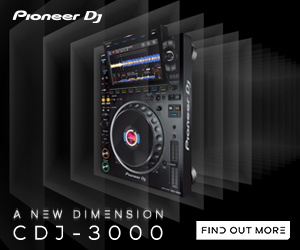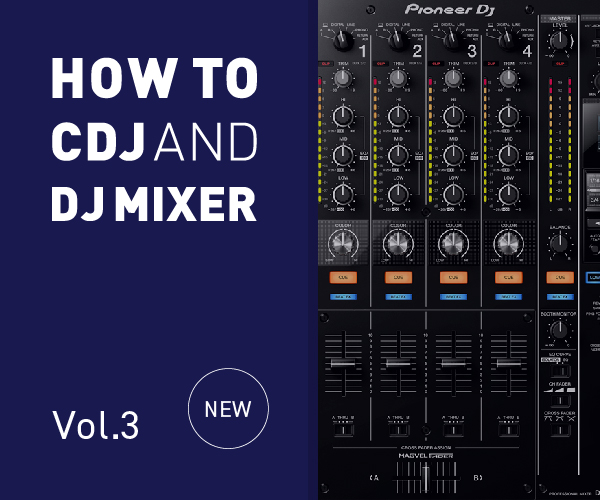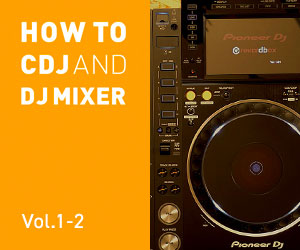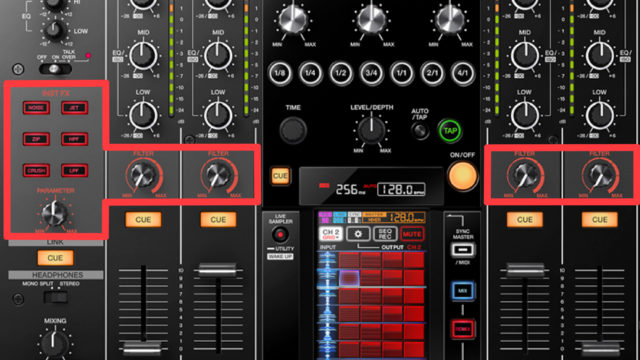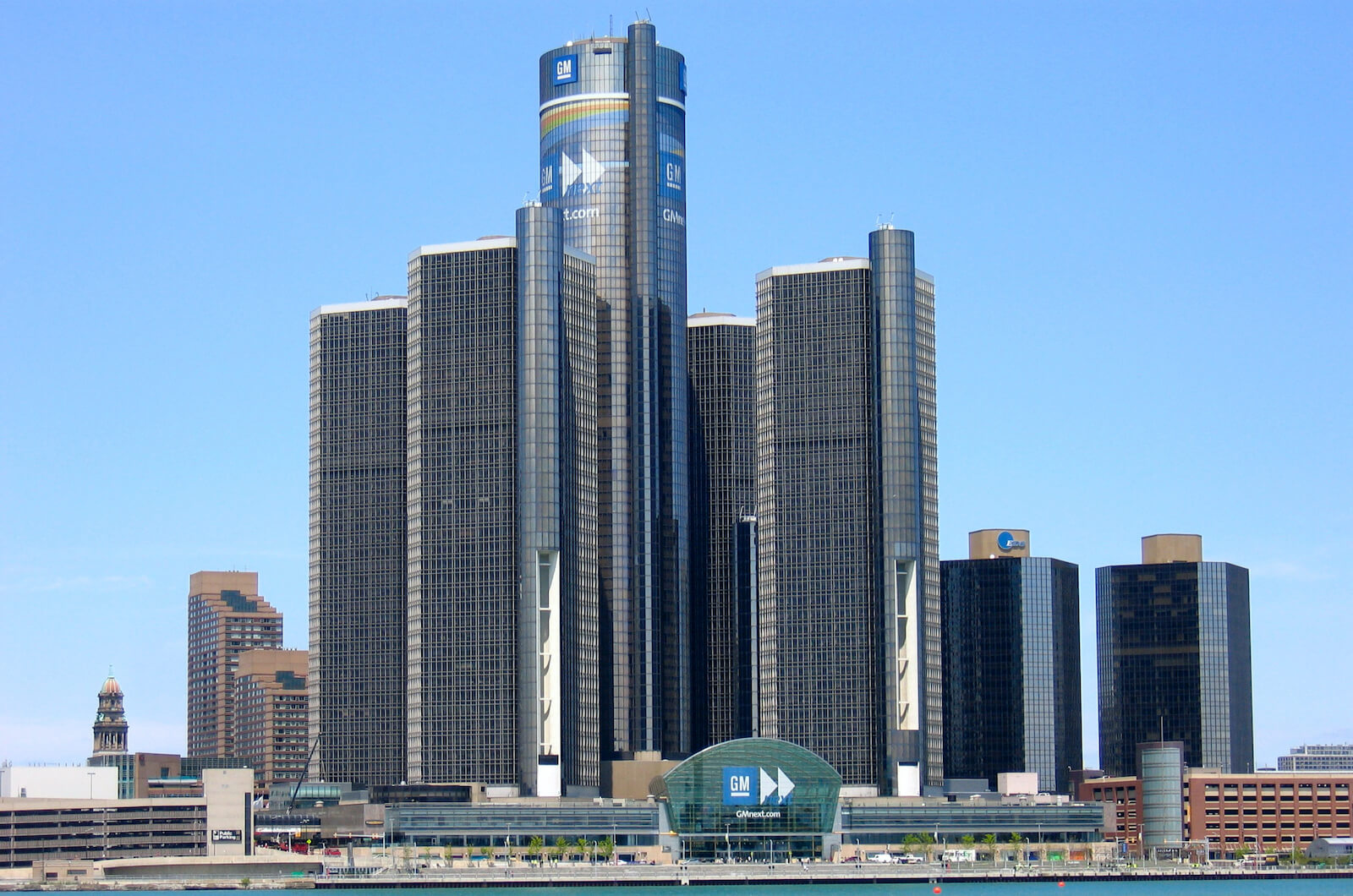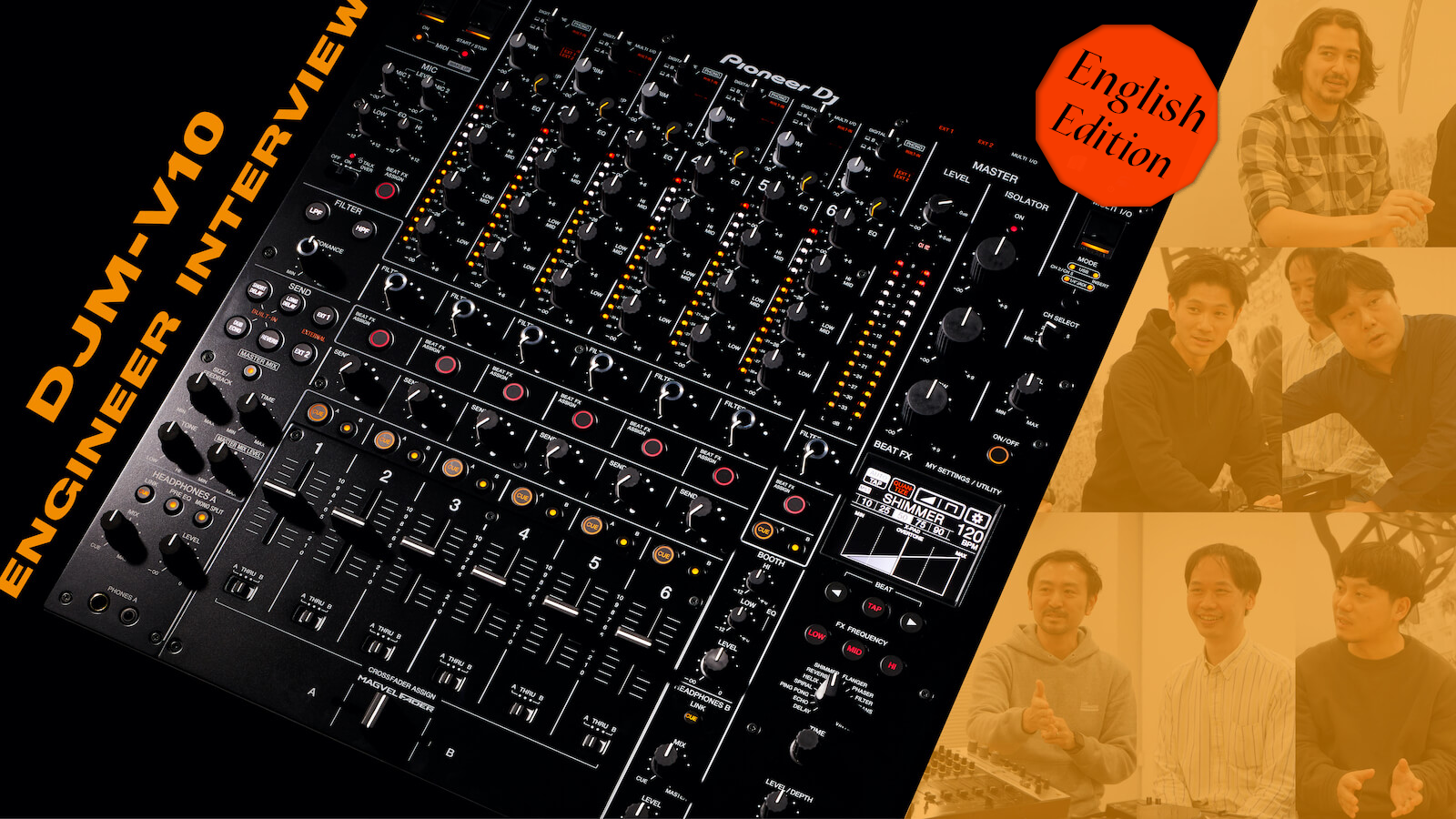
Highlight
Pioneer DJ “DJM-V10” Engineer Interview
Text & Interview : Hiromi MatsubaraPhoto : Shotaro Miyajima
2021.6.16
6-channel each powered by 4-band EQ. Equipped with the Master Isolator. The effects are diverged into Filter and Send FX from previous models’ Sound Color FX. At first glance, the number of its knobs has surely surprised you. “DJM-V10”-a new breed of mixer from the products series until DJM-900NXS2; a current club standard model from “Pioneer DJ”. Its usability has been massively refined from their former DJ mixers, loaded with new functions to match ever-diversifying DJ performances, styles and needs. This is a masterpiece, deserved to be called “a DJ mixer to realize DJ’s dreams”.
Then, what’s so new about DJM-V10 from the other DJ mixers? This interview with 6 engineers associated with DJM-V10 development will unravel that question in depth. From its project planning to research and development, here you will witness the insatiable curiosity of the engineers behind the birth of the superlative DJ mixer, designed to craft new soundscapes.
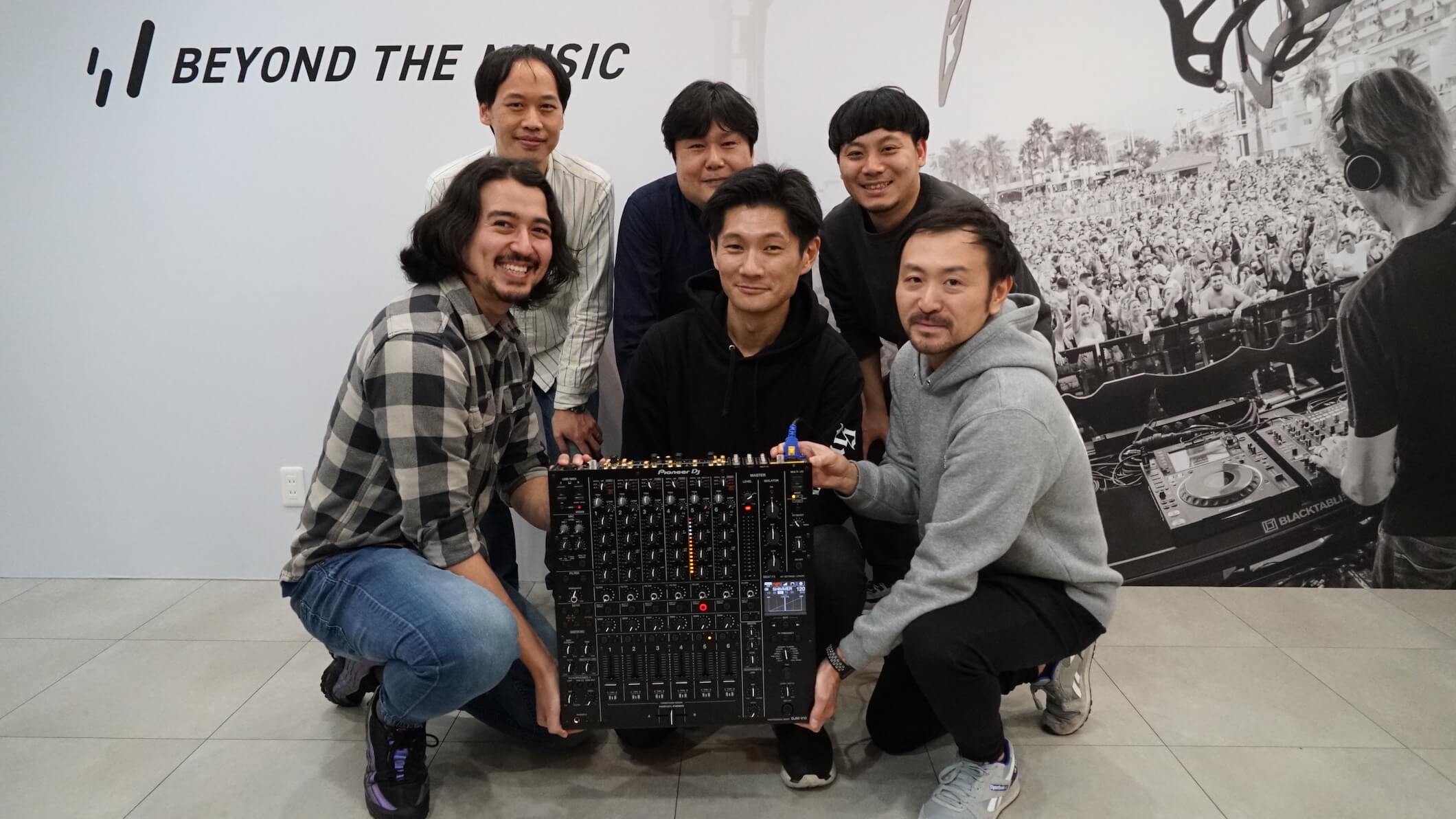
Interviewees (clockwise from the bottom left):
Thomas-Ryoma Montpetit
Business Planning Management Department, Business Planning Department, Product Planning Section Ⅲ
product planning (researching product and customer requirements, defining the product vision, evaluating prototypes, ensuring customer satisfaction)
Favorite music genre: lo-fi hip hop. Dubstep, UK Hardcore, Psy Trance, Downtempo
Also was in charge of: TORAIZ SP-16, INTERFACE 2, DJM-V10
Norifumi Hamada
Engineering Management Department, Mixer Design Department, Mixer Section
Electrical design engineering/evaluation of audio circuit
Favorite music genre: Crossover jazz, Acid jazz, Bossa Nova, Ambient, AOR
Also was in charge of: DJM-2000, RMX-1000, DJM-750, DDJ-SZ, TSP-16, DJM-750MK2, DDJ-800, DJM-V10
Ichiro Sugai
Engineering Management Department, Firmware Design Department, Mixer Section
DSP engineering/development for DJ mixers
Favorite music genre: house, techno
Also was in charge of: DJM-900NXS2, DJM-V10
Takahiro Kuramoto
Design Center
Products design at AlphaTheta corporation
Favorite music genre: house, nu jazz
Also was in charge of: CDJ-3000, DJM-900NXS, DJM-V10
Yuu Nagata
Engineering Management Department, Firmware Design Department, Advanced Product Design Section
Product development (user/market research, planning new features, parts layout, product size), mechanism/cabinet design for mass production
Favorite music genre: roots rock reggae, ska, rocksteady, dub
Also was in charge of: DJM-V10, DJM-TOUR1, DJM-900NXS2, DJM-900NXS, DJM-900SRT, DJM-450, DJM-2000NXS, TORAIZ SQUID
Shinya Koizumi
Engineering Management Department, Firmware Design Department, Mixer Section
DSP engineering, audio signal processing
Favorite music genre: techno
Also was in charge of: DJM-900NXS, DJM-900NXS2, DJM-2000, DJM-909, DJM-S9, DJM-S11, RMX-1000, DJM-V10
DJM-V10- maximize self-expressions of artists
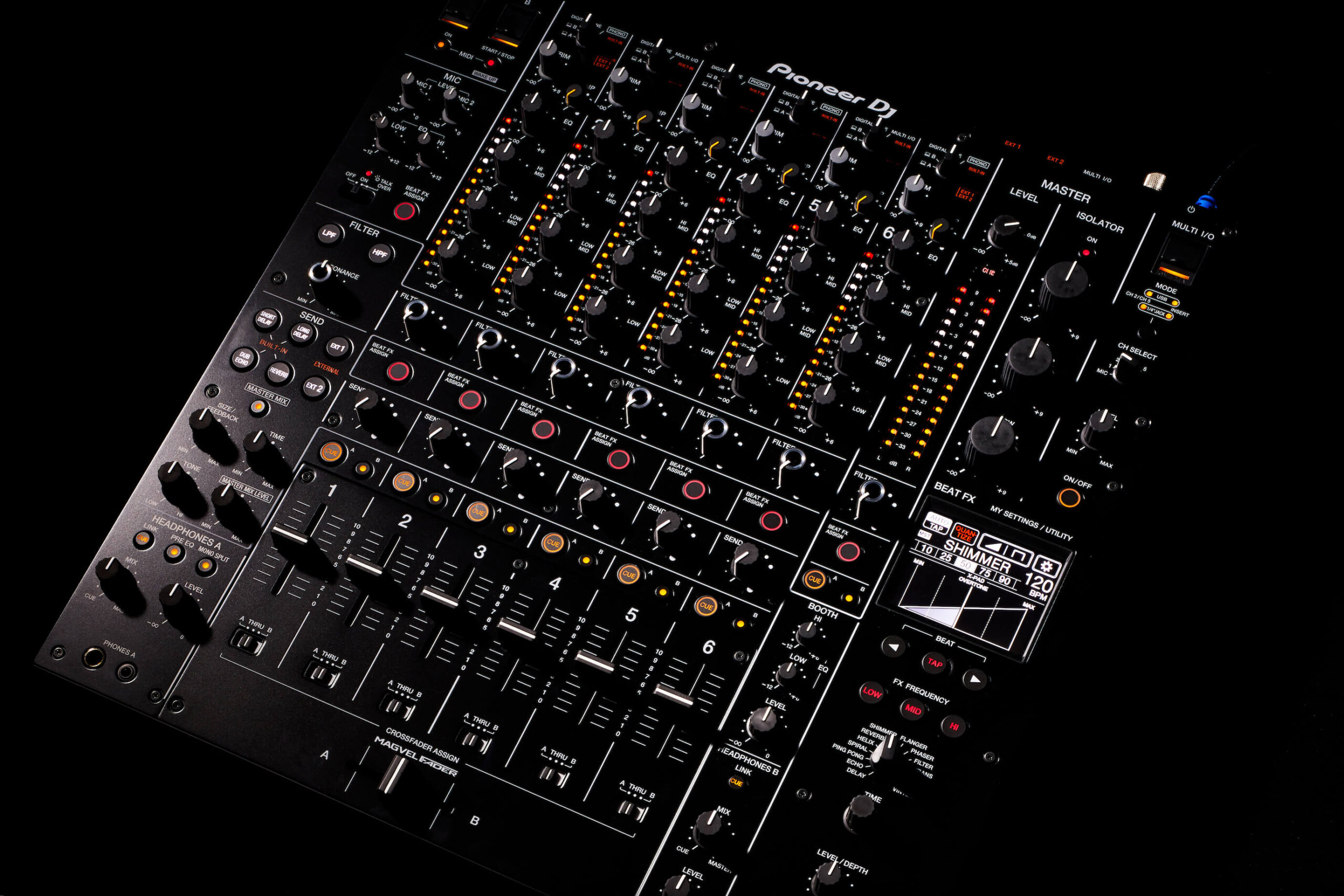
First things first, what brought you to develop DJM-V10?
Montpetit: It’s not like something special triggered us to develop DJM-V10, but making a new mixer was pre-decided while we had constantly conducted researches to improve our products. That was around the beginning of 2018, I remember. At that time, it wasn’t still clear if we were making a successor model of DJM-900NXS2 or a completely new breed of mixer, but when this project kicked off, it did start as “a successor model” as our general direction. While our product vision remaining still vague, we’ve done numbers of DJ interviews and market researches for clubs, and learned how our “Pioneer DJ” mixers were used on-site; which gradually led us to consolidate our product image. Initially, a product like “4-channl mixer with Beat FX and Sound Color FX…” was also one of the possibilities, but as we continued researches, we came to notice that DJ’s performance styles are changing little by little. Then we reconsidered our concept that could provide more values to DJs. From there, we’ve found demands for, and our concept of “a product with high extensibility, a product maximizes your self-expression”; which was the starting point of DJM-V10 development.

Thomas-Ryoma Montpetit – Business Planning Management Department, Business Planning Department, Product Planning Section Ⅲ
While you’ve conducted a series of market researches, what made you realize this “shift in DJ performance styles”?
Montpetit: The easiest example would be external effectors. When I saw people using their own effect units in their sets to tailor the sounds as they wish, I asked to myself: “can we create a mixer that enables creative expressions and performances, by adding those external devices?”. Since then, we started to visualize a mixer which you can add external equipment in addition to our conventional 4-channel. Finally, we’ve officially confirmed this product image after additional interviews with DJs.
By the way, what’s DJs’ feedbacks you get most frequently about DJM-900NXS2?
Sugai: It’s most likely about the sound quality. As there aren’t too many digital DJ mixers available, and because our mixers have quite large market shares, we can very easily be compared to analog mixers. Then, [feedbacks on] our Filters come next.
Montpetit: Exactly. We had lots of feedbacks on the Filters as expected. Many DJs tend to call Sound Color FX in DJM-900NXS2 as “Filter”; technically it’s “a Filter among 6 different Sound Color FXs”…. Anyways, we learned that it’s so popular among many [DJs]. Quite a few of them have their own unique ways to use it, often wishing for more precise control, rather than simply twisting right to high-path and left to low-path.
Sugai: For Sound Color FX, we found demands for DJM-2000NXS’s style *.
Also, we’ve done deep-dive researches to know “how many channels, and what kinds of external devices are actually used ” in various venues. We found out that, the more creative performance it is, the more likely all the 4-channles are used, or, more likely other brands’ 4-band EQ mixers are used.
*bottom-left being the minimum value, effect is applied as you sweep to the right: the style adopted in DJM-V10
Left: Sound Color FX in DJM-900NXS2 / Right: Sound Color FX in DJM-2000NXS
Koizumi: Recently, our RMX-1000 is attracting more and more users, and also DJS-1000 started to catch up. Thinking that majority of users will connect CDJs to a mixer, we’ve been discussing from the beginning: “4-channel is maybe not enough”.
Kuramoto: Now that I think of our initial project proposal, we started to realize that users we can’t fully support only with DJM-900NXS2 were expanding; we ourselves have kept offering new products like DJS-1000, and there are more and more B2B artists in techno/house scenes. In this context, we came to think about approaching DJs who use multiple channels, who require much finer adjustments, and who perform creative mixes.
Since we used to sell both DJM-900NXS and DJM-2000NXS side by side at one point, we considered offering 2 different lines of mixers simultaneously [DJM-900NXS2 and the new model], rather than the new model being DJM-900NXS2’s replacement.
By hearing you so far, I can feel that market researches are such a crucial step. For interviewing DJs, where, and how many locations do you usually go?
Montpetit: We did quite a few numbers [of interviews]. Here’s one example: Arai and I visited “Movement Electronic Music Festival” in Detroit, US, to evaluate our Filters, Compressors, and 4-band EQ. We invited the performing artists to a hotel room in GM Renaissance Center where General Motors HQ is at, right next to the festival venue “Hart Plaza”. We explained our DJM-V10 project [to the artists], asked them to evaluate EQ’s frequency and sharpness or Filters resonance, to touch different components, and to give us feedbacks, one artist after another.
Left: Movement Electronic Music Festival / Right: GM Renaissance Center
So, you basically continued that process over and over.
Montpetit: That’s right. We sent feedbacks right away to Japan, then met up in our team as soon as we got back [to Japan], discussed and reviewed the visit in detail: “a frequency can be distracting when you put resonance in 1 o’clock position and use this Filter in that way”, or things like that. Then we checked those parts in our studio, moved onto improvements… we repeated this process.
Sugai: We’ve also got to hear from engineers called PAs at festival venues, regarding connectivity or any requests for additional functions, which were eventually reflected and incorporated in DJM-V10.
Montpetit: We communicated heavily with PAs especially when we were in London, Berlin and Ibiza to evaluate the sound quality.
Compared to other market researches you’d done for previous products, did you especially focus on the researches this time? Or you do it as intensively each time?
Sugai: It’s not like “because it’s DJM-V10” necessarily, but rather we emphasize this step for any kind of product.
Koizumi: But still, we might put extra efforts when it comes to a brand-new product. And it’s the same for our club-standard top models like DJM-900NXS2. In this sense, because DJM-V10 is packed with so many novelties, we had to carefully hear [opinions and feedbacks] about each point to maintain the best balance possible. We can maybe say we conducted this research part a bit more intensively than usual.
Montpetit: We’ve upgraded DJM-800 to DJM-900NXS, then to DJM-900NXS2, but this time, we tried out a radically different development approach, as our product concept being completely new direction from the others. You see, we’ve done various new attempts in this mixer: adding Compressors, completely separating Filter and Send knobs, fully re-designing its façade. We especially paid attention to them upon researching for adjustments and improvements.
It’s probably not so hard for users to notice all the new functions added to this mixer, but if you’ve to pick one major indicator for “DJM-V10 is not DJM-900NXS2’s successor model”, what would it be?
Montpetit: We’ve discussed on this topic again and again among ourselves, and one obvious thing would be the design. Then the name comes after. When we were deciding its name, there were many options: “DJM-1000MK2” because it looks like DJM-1000, or, “DJM-600″/”DJM-6000” for its iconic 6-channel. Yet after all, we wanted to show its freshness, to let our customers recognize that this is a new kind of mixer, so we settled on unprecedented “DJM-V10”.
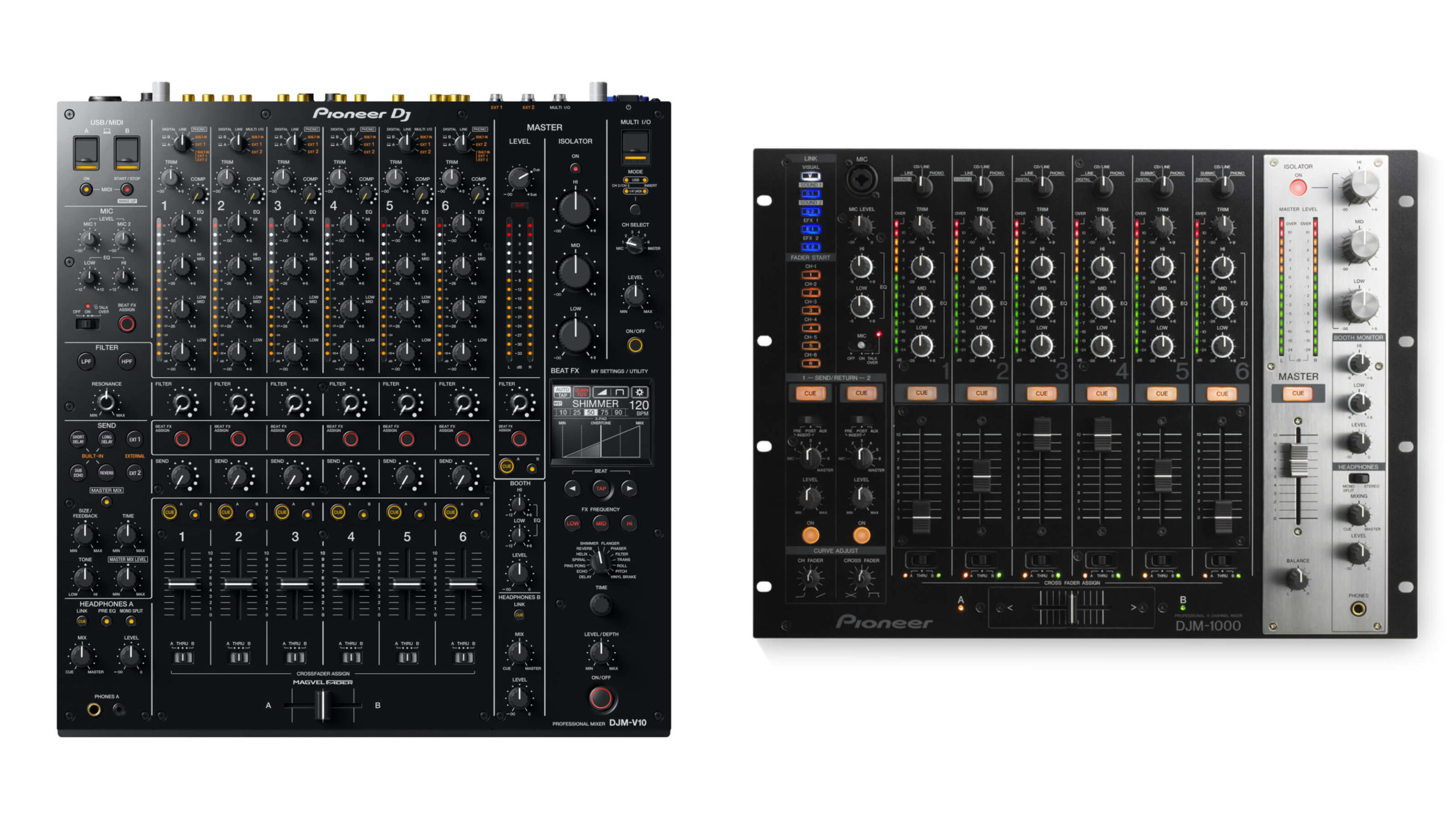
Left: DJM-V10 / Right: DJM-1000
What’s your message behind the letter “V”?
Montpetit: Well… it’s something like “S” in iPhone 4S…
Koizumi: Why would you pull 4S as an example now [laugh]
Montpetit: You know, it’s from iPhone 4S that they put “S” in the name, but apparently, its meaning isn’t officially defined, so it became a hot topic then… Everyone was wondering what “S” can be. But you’re right, maybe this wasn’t the best example. [laugh]
[everyone laughs]
Montpetit: But indeed, we didn’t choose “V” with a specific meaning. While thinking about how to showcase the product uniquely with a name, we had several ideas: to reduce a number, to add alphabets, etc. We also asked our overseas affiliated companies what would be the best choice if we add any alphabets for this mixer, then some keywords showed up “Versatile”, “Variety” and such. That’s when we decided “V” would be it, hence, “V10”. But officially, it’s not clearly defined.
Koizumi: We haven’t publicly talked about this neither.
Kuramoto: There were more vocabularies besides “Versatile” and “Variety” right?
Montpetit: Yes. “Vitalize” for “vitalizing old tracks with a Compressor” or “Vertex” for “positioned in the vertex in a DJ mixers’ hierarchy, chosen by DJs wish to perform more creatively”.
I see that it’s a mixer packed with so many different “V”s.
Next page:【 Designing a flat, flexible DJ mixer like a blank canvas 】




